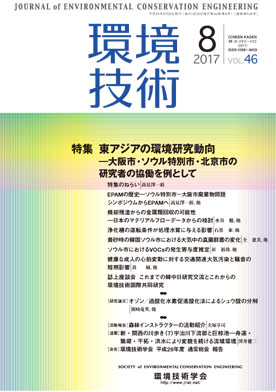
- |<
- <
- 1
- >
- >|
-
Tatsuhide HAMASAKI, Xu JIE, Yunqi CHEN, Tadao MIZUNO, Hiroshi TSUNO2017 Volume 46 Issue 8 Pages 430-440
Published: August 20, 2017
Released on J-STAGE: September 15, 2017
JOURNAL FREE ACCESSAn O3/H2O2 advanced oxidation process was experimentally examined for leaching radioactive cesium from contaminated sewage sludge since the excessive oxalic acid from the conventional method of coprecipitation with ferrocyanide complex salts disturbs the process of radioactive cesium removal. The most suitable condition for leaching radioactive cesium was a pH of 3,which subsequently mineralized the oxalic acid effectively. According to this study, 30 ㎎/L of hydrogen peroxide was an appropriate concentration. TOC was reduced from 100 ㎎/L to 40 ㎎/L within 40 minutes. The ozone requirement per TOC removal was 1.9 ㎎ O3/㎎ C. Therefore, it proved that one molecule of ozone was needed to mineralize one molecule of oxalic acid. Oxalic acid was effectively decomposed at a pH of 3. Therefore, an O3/H2O2 advanced oxidation process using a multistage reactor with 30 ㎎/L of hydrogen peroxide was recommended.
View full abstractDownload PDF (1218K)
- |<
- <
- 1
- >
- >|